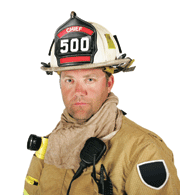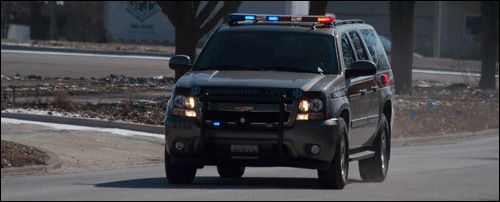Winter Blast tests interoperability, on-scene issuance
25 June, 2008
category: Biometrics, Government, Library

Demonstration shows that FIPS 201 compliant ID cards issued by different jurisdictions can be read in one location
By Zack Martin, Editor
In a disaster, officials need to know who’s arriving at a scene and what they are qualified to do. Providing this information is the main goal behind the First Responder Authentication Credential. “I need to have a layer of trust that you are who you say you are,” says Craig Wilson, coordinator with the National Preparedness Directorate in the National Capital Region with FEMA.
Some new features of the ID card were shown during the Winter Blast demonstration, sponsored by FEMA’s Office of National Capital Region Coordination, held in March in the Washington D.C. and Philadelphia areas. The goal of the Winter Blast was to prove interoperability of IDs across jurisdictions and the ability to rapidly authenticate the first responder credentials. The first responders are using FIPS 201 credentials, the same ID cards being issued to government employees and contractors.
Winter Blast focused on how the credentials work with the public health and medical services and the emergency management communities. The demonstration for medical workers included an Emergency System for Advanced Registration of Volunteer Health Professionals and other healthcare responders. Pennsylvania and Virginia, along with the U.S. Department of Health and Human Services and the Department of Veterans Affairs, are already using these FIPS 201 and HSPD-12 compliant credentials.
“For the first time ever we had credentials in the medical community that were interoperable from the Commonwealths of Pennsylvania and Virginia and the departments of Veteran’s affairs and Health and Human Services,” Wilson says. “It was the first time we concentrated on the medical community and linked HHS with local and state municipalities.”
The demonstration simulated two disasters: a chemical explosion at a high school in Pennsylvania and an explosion at another high school in the Washington area. Because one of the explosions was in the National Capital Region a staging area had to be set up, Wilson says. The rally point was the Women’s Memorial at Arlington National Cemetery.
When a first responder entered the zone, if they already had a first responder authentication credential, they would place the card in a reader and enter the PIN for authentication. After the card and individual were authenticated he or she would gain access to zone two.
If the responder didn’t have an ID card, they could get one on site, Wilson says. Applicants needed a driver license and another form of ID, along with information about their skill set. It took about 11 minutes to issue a card.
In zone two the credential was checked once again, this time with the PIN and biometric, Wilson says. It was the first time match-on-card was performed with the IDs and it worked well.
It was in zone two that another component of the FRAC was seen, Wilson says. When the card is first issued the skill set or attributes on the card are dormant. That information is sent to a national or local database to be confirmed and then pushed back to the reader through a wireless or satellite connection.
If verified the attributes are activated once the user authenticates the card again.
This was a whole new piece for the test, Wilson says. It required linking Health and Human Services systems with state databases.
Pennsylvania has issued about 60 cards, most of them to its Philadelphia Medical Reserve Corp., says Mercita Clelan, workforce preparedness manager in the Pennsylvania Department of Public Health. They had success using the system to check for physicians’ licenses. The state would like to move forward and issue additional credentials, but they are waiting for the governor’s office to offer guidance.
Virginia is also issuing the cards to some of its first responders, Wilson says. Officials from the state participated in Winter Blast but did not return requests for comment.
There was also a geospatial feature to Winter Blast. Participating State Emergency Operation Centers across the country, including those in North Carolina, Iowa, and Utah, were able to track responders as they checked into the system using their credentials, Wilson says.
This ability is important because by tracking responders, emergency managers know exactly what capabilities are at hand geographically, and it facilitates easier accountability of personnel after an incident. Additionally, emergency managers will be able to see a display of the responders’ attributes.
Throughout the four-hour demonstration, officials checked 159 ID cards and didn’t have any problems reading them, Wilson says.




